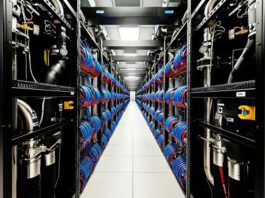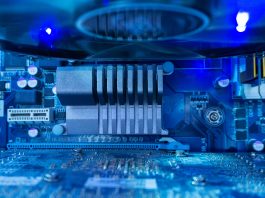Experts at the Argonne National Laboratory have pioneered a novel electron microscopy technique that may revolutionise supercomputers.
The new electron microscopy method can potentially help to overcome the high energy demands of supercomputers, a major barrier to the technology.
Today’s supercomputers demand immense energy, comparable to powering thousands of homes.
In response, researchers are exploring innovative, energy-efficient supercomputing techniques inspired by artificial neural networks, which emulate neuron processes in the human brain.
One promising approach involves leveraging charge density waves in specific materials. Charge density waves are electron patterns that move in sync, increasing resistance and potentially enabling fast switching for computing and sensing applications.
Argonne National Laboratory’s revolutionary electron microscopy method
Argonne National Laboratory researchers have developed a groundbreaking electron microscopy technique to study these waves.
Using the ultrafast electron microscope at the Center for Nanoscale Materials, a DOE Office of Science user facility, the team observed the nanosecond dynamics in a material known to exhibit charge density waves at room temperature—tantalum sulfide (1T-TaS2).
The research involved testing a flake of 1T-TaS2 with attached electrodes to generate electric pulses.
Initial hypotheses suggested that short pulses would drive resistance switching through high electric fields or currents. However, two critical observations emerged from the ultrafast electron microscopy.
New insights into charge density waves
Firstly, the charge density waves melted due to the heat generated by the injected current rather than the current itself, even during nanosecond pulses.
Secondly, the electrical pulses caused drum-like vibrations across the material, which disrupted the arrangement of the waves.
“Thanks to this new technique, we determined these two previously unobserved ways in which electricity can manipulate the state of the charge density waves,” said Daniel Durham, a postdoctoral researcher at Argonne.
”The melting response mimics how neurons are activated in the brain, while the vibrational response could generate neuron-like firing signals in a neural network.”
Implications for future microelectronics
This study introduces a novel method for examining electrical switching processes using ultrafast electron microscopy, enabling researchers to observe microelectronic material functions at nanoscale lengths and speeds.
The drive toward smaller, faster, and more efficient microelectronic devices makes materials like 1T-TaS2 highly attractive, especially since they can be formed as nanoscale layers.
This innovative research at Argonne National Laboratory marks a significant step forward in the quest for energy-efficient supercomputing.
By unveiling new ways to control charge density waves through electron microscopy, scientists are paving the way for next-generation computing technologies that are both powerful and sustainable.









